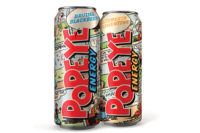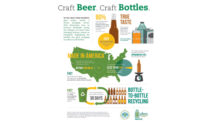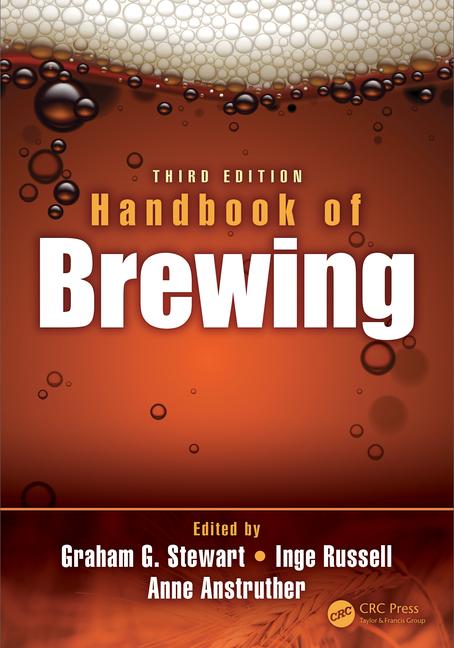A Touch of Glass
With a bit of Americana, Mountain Valley fills a niche in premium bottled waters
By ELIZABETH FUHRMAN
The consumer trend of trading up for gourmet and specialty beverages isn’t limited to categories such as wines, spirits, beers and coffees. Water has a place in this movement too, and Mountain Valley Spring Water Co., Hot Springs, Ark., with its historic brand and glass packaging, is moving its spring and sparkling waters to on-premise and retail channels to fill the premium water niche.
Sixty-one percent of fine dining full-service operators are seeing more orders for bottled water than two years ago, reports The National Restaurant Association, Washington, D.C. “That’s an enormous opportunity,” says Breck Speed, chairman and chief executive officer for Mountain Valley Spring Water. “Americans are a little behind Europeans in enjoying water with all meals. In a lot of cases, where we’re out there competing, we’re not trying to beat out foreign competition. It may be the very first time that restaurant chain or individual fine dining establishment might put bottled water on their menu at all. It’s kind of like the early days for bottled water, so it’s a great opportunity … like the Oklahoma Land Rush.”
Mountain Valley Spring Water may be new to on-premise,
but it isn’t new to the water business. The company finds its home in
Hot Springs National Park, an area that is a protected watershed known for
its warm thermal springs as well as a number of cool springs. Mountain
Valley Spring Water products contain a unique mineral content from
“Spring One,” one of the three springs located within the
company’s protected 2,000-acre tract.
Originally, Mountain Valley Spring Water was sold as
Lockett’s Spring Water until a pharmacist named Peter E. Greene
changed the name in 1871 and began distributing it nationally. Even though
the company has changed hands several times since then, its current owner,
Clear Mountain Spring Water, claims it is the longest running continuously
produced brand in the United States. Even its headquarters in Hot
Springs’ historic district is listed on the National Register of
Historic Places.
Speed entered the home-and-office delivery
distribution system by starting Clear Mountain in 1988 with a group of
investors in Arkansas where the bottled water market was just beginning to
develop. Clear Mountain grew along with increasing bottled water
consumption and through acquisitions. Along the way, the company began to
pick up Mountain Valley distributorships.
When Mountain Valley came up for sale in 2003, Clear
Mountain was a natural to acquire the business since it was already
Mountain Valley’s largest distributor and since Speed and other
investors also owned Veriplas Inc., a PET plastic container manufacturer
that was Mountain Valley’s largest competitor in PET product for
water bottles in central Arkansas and the surrounding states.
Clear Mountain and Veriplas Inc. combined to acquire
Mountain Valley in April 2004, making Mountain Valley part of a vertically
integrated company with on-premise, retail and home-and-office delivery
sales channels. The company’s sales now break down into two-thirds
from water and one-third from plastic container manufacturing.
Mountain Valley’s point of difference boils down
to three elements, says Jim Karrh, chief marketing officer. The first thing
that makes Mountain Valley different is quality.
“Everyone wants to talk about being high
quality, but you need some objective measures,” Karrh explains.
“In our case, it’s taste. We know we have a premium taste that
is as good as anything that’s available
in the world. With spring water, there are things humans can’t
replicate. It’s a process of more than 3,000 years that depends on
geological properties. What we end up with is a water coming out of the
ground naturally sodium free but with good minerals such as magnesium and
calcium.”
Heritage is what next sets Mountain Valley Spring
Water apart, with stories about the brand that include 13 U.S. presidents,
movie stars and sports stars. This leads to the third element, which Karrh
calls Americana. “We’re really a bit of American
history,” he says. “We’re the only premium domestic water
available coast to coast in glass, and the one brand that can be a
preferred alternative to imported waters. That,
from a marketing and customer standpoint, is a tremendous place to
be.”
On-premise potential
Mountain Valley traditionally has been distributed by
a network of about 120 independent distributors in 36 states. Historically,
the water was distributed through home-and-office route operations, and
those independent distributors used what capabilities they could to address
the on-premise and retail trades.
But now the Mountain Valley brand provides
opportunities for the whole company to focus on other distribution methods
to move the products into the on-premise and retail channels where Speed
thinks the company will have a long-term competitive advantage. A targeted
focus on retail and on-premise is the reason Mountain Valley redesigned its
glass bottles and logos and introduced new products and sizes.
While Mountain Valley has been known primarily for its
premium spring water in glass, it did add plastic bottling in the early
90s. In 2004, when Mountain Valley was acquired, the glass single-serve,
half-gallon and 1-liter spring water was bottled in a stock glass bottle
with a film label and a plastic cap. The packaging wasn’t
communicating the premium nature of Mountain Valley Spring Water, Karrh
says.
The realities of storing, cooling and serving water
on-premise moved Mountain Valley to a fused logo on the bottle.
“Clients want a bottle that will look good when they put it on the
table, whether or not they put it in and out of high-humidity conditions or
ice,” Karrh says.
Staying true to its heritage, the company updated the
bottle’s label by going retro and back to a red oval with fonts and
designs true to the original Art Deco-style packaging. The back of the
bottle also now includes Mountain Valley Spring Water’s story.
Additionally, Mountain Valley replaced the bottle’s plastic cap with
an aluminum-closure design taken from original Mountain Valley Spring Water
packaging.
“The packaging says that this is premium,”
Karrh says. “People who don’t even know Mountain Valley, just
from looking at the packaging, [can see] that heritage come
through.”
Mountain Valley’s next move for on-premise was
to bring back Mountain Valley Sparkling Water. The company had produced a
sparkling water until the late 1990s, but since its previous owner
wasn’t in the on-premise channel, it dropped the variety. Mountain
Valley Sparkling is lightly carbonated with a crisp taste including mineral
content.
“Sparkling is not a big part of the category
generally, but it’s a big deal in the on-premise world,” Karrh
says. “Most finer restaurants, caterers and hotel operators will
serve more sparkling than still water.”
Moving on-premise sales
further forward, Howard Staley, director of on-premise sales, joined
Mountain Valley in January of 2005. “The direction I really have is
to take the company and new glass products in other channels with a more
appropriate go-to-market plan and distributor network,” he says.
“That means putting the products in the hands of distributor networks
that are more suited for the on-premise/foodservice trade.”
With glass bottled waters the focus of on-premise
sales and the relaunch of its sparkling water line, Mountain Valley still
needed to provide the appropriate package sizes that on-premise operators
require. Typically, the 1-liter bottle is shared during table service. The
half-liter is used more for single-serve, but is also shareable and more
acceptable in a more casual dining environment. Beginning in July, Mountain
Valley will offer a one-third liter of sparkling and spring waters.
“That package specifically will have
appeal for lodging perhaps for an in-room mini bar or casino
business,” Staley says. “It’s also great for meeting
breaks and catering where a smaller size is appropriate for grab and go.
“Being able to standardize the process, price
point and delivery system is a real advantage for Mountain Valley, because
we’re national in scope,” he continues. “We’ve made
it possible to have a great sparkling and spring water from the same place.
That’s why it’s helpful to have companion sizes and pricing so
there is a similar look on the table, and it makes for a more consistent
message for the operator in terms of presenting.”
The company is currently in test markets for
Ted’s Montana Grills, owned by Ted Turner and George McKerrow Jr.,
which Staley feels is a perfect fit for Mountain Valley because of its
fine-dining American menu experience. Typically, locations that are
excellent at moving wine products are the locations Mountain Valley is
targeting, including American, French, Italian and other fine-dining
establishments. “The wine consumer is a bottled water
consumer,” Staley says. “That’s our end consumer, and
that’s the restaurant clientele we’re looking for.”
Mountain Valley Spring Water is moving toward a hybrid
system of distribution of food, wine and spirits, and beer distributors.
One of the company’s largest distributors is Southern Wine &
Spirits in Las Vegas, and that city has typically been one of the
company’s strongest on-premise markets. “Las Vegas has turned
into quite a culinary hotbed,” Staley says. “It’s fueling
a lot of really upscale, white tablecloth restaurant businesses that
we’re also going directly at.”
Staley is targeting major metropolitan areas,
including New York, Miami, California and the Western states, where the
company can focus and have field people in place. On-premise sales also
will focus on the company’s current core markets such as Atlanta and
Chicago, and smaller markets such as Kansas City, Mo.; Memphis, Tenn.; and
New Orleans, where the brand name is very familiar
and the company already has equity.
Not discounting the impact home-and-office delivery
has on the company, the Mountain Valley brand is making an impact in this
market as well. Clear Mountain has seven company-owned Mountain Valley
distributorships in Little Rock, Memphis, Kansas City, Charleston, S.C.;
Savannah, Ga.; and Greenville, Miss. Now, Mountain Valley is a primary
product line and an emphasis for home-and-office delivery, says Philip
Tappan, president of Clear Mountain home-and-office delivery.
“It’s kind of refreshing in that
we’re going back [in home-and-office delivery] and telling the
Mountain Valley story and trying to up-sell our customers on the heritage,
quality and glass packaging,” he says.
More diversity in the product mix has produced an
increase in sales of about 12 percent in the seven company-owned
distributorships. For home-and-office delivery, the company provides
2.5-gallon and 5-gallon glass containers. The division also is
discovering that smaller glass packaging is a good trend as well. “We
are finding a number of offices that are willing to place the single-serve
glass bottles in their boardrooms, executive areas or offices,”
Tappan says. The division also distributes Mountain Valley to health and
racquet clubs, spas, and through a “Touch of Glass” holiday
promotion to home customers and businesses for
holiday parties.
Rewarding retail
Bottled water consumers have become more
sophisticated, much like overall food consumers, Speed says. Grocery stores
are increasing the selection of higher quality goods, with even the bottled
water aisles beginning to differentiate, which is where Mountain Valley
plans to fit in. The company is beginning to distribute in higher-end
grocery chains, with the goal not to compete against the giant cola
companies, but in its own premium niche.
And because Mountain Valley is part of a vertically
integrated company, the company is able to introduce innovations in
packaging. Along with 8-ounce, 12-ounce, 16.9-ounce, 24-ounce, 1-liter and
1.5-liter in PET bottles, the company launched a one-way 4-gallon
recyclable bottle this spring. “It kind of crosses retail and
home-and-office delivery,” Speed says. “An enormous number of
water coolers were sold at retail last year.”
The single-use bottle is made out of recyclable material, and can either be recycled again or
discarded. The ultra light bottle – it only uses 307 grams of PET
– can function under the pressures created by bottled water
dispensers. The product also eliminates bottle deposits for retailers.
“It’s another way to reach into a niche
where we think we have a competitive advantage because we’re
vertically integrated, and because we’re the first to market,”
Speed says.
The company is in the process of developing a bottle
using PLA as well. “There has been tremendous interest in the natural
foods industry for this,” Speed says.
But Mountain Valley Spring Water doesn’t have
any aspirations to be the next gingko biloba, caffeinated, or whatever
nutraceutical water. “It’s all right to just be water,”
he adds.
“We’ve got quality and heritage with this
water,” Speed says. “This is an enormous opportunity to seek
out and really develop and dominate that premium niche.”
Historic foundation
Situated along historic Bathhouse Row in Hot
Springs’ downtown district, the Mountain Valley Water building is an
example of the Classical Revival style. Constructed in 1910, the two-story
building originally was home to DeSoto Mineral Springs, and built over a
spring that can still be seen at the rear of the first level. In 1921, a
third level was added to accommodate a Japanese-styled ballroom, which
houses Mountain Valley’s corporate offices today.
The building became home to Mountain Valley Water Co.
when its owner purchased DeSoto. However, the company’s headquarters
moved to St. Louis, and has had several headquarter and owner changes since
then. It wasn’t until 1987 that the headquarters returned to Hot
Springs and the company began restoring the original DeSoto building, with
then Governor Bill Clinton speaking at the rededication ceremony in 1988.
In 2004, following the purchase of Mountain Valley by
Clear Mountain Spring Water, more renovations returned the Visitors’
Center to a more historically authentic state. The “Famous Mineral
Water” sign was re-created and placed above the Water Pavilion. In
addition, the collection of Mountain Valley bottles and memorabilia for
display more than doubled.
Dining with water
Overall, full-service restaurant operators are seeing
more orders for bottled water, according to the National Restaurant
Association. In terms of beverages, bottled water is second to wine in the
number of increased requests. The percentage of full-service operators by
type of operation who said their customers are buying more bottled water
compared to 2004 are:
| Fine-dining | 61% |
| Casual | 55% |
|
Family
|
52% |
|
Source: National Restaurant Association, Washington, D.C.
|
|




